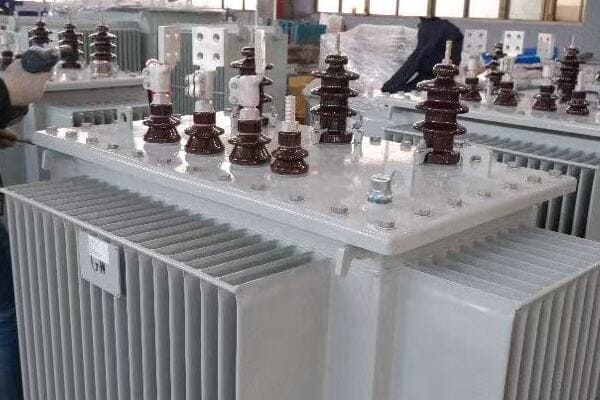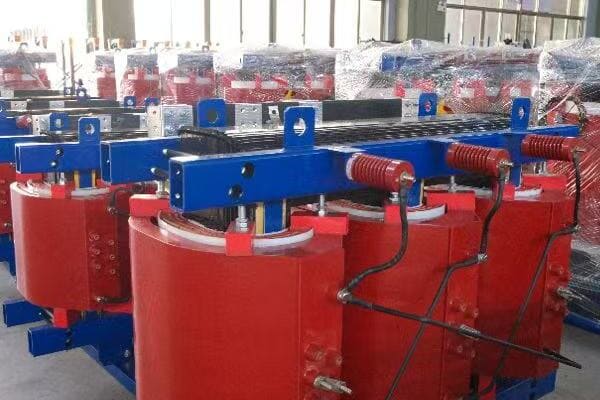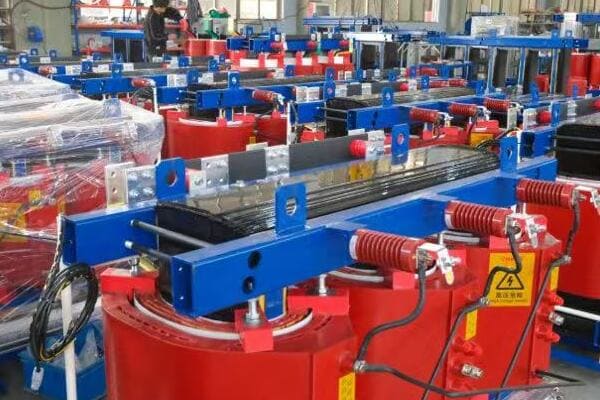7 Types of Electric Transformers and How to Choose the Best One for Your Project?
Are you struggling to select the right transformer for your upcoming project? You’re not alone. Many engineers and project managers find themselves overwhelmed by the variety of transformer options available. But what if you could easily identify the perfect transformer for your specific needs?
Electric transformers come in different types including power, distribution, isolation, and control units. Choosing the right one depends on voltage, environment, safety, and application needs. This guide explains 7 key transformer types and how to select the best option based on your project requirements.
In this comprehensive guide, I’ll walk you through the seven common types of electric transformers and provide you with a clear framework for choosing the best one for your project. Whether you’re working on a large-scale power distribution system or a small industrial application, this article will equip you with the knowledge to make an informed decision.
Why Transformer Selection Matters?
Have you ever considered how the wrong transformer choice could derail your entire project? It’s a scenario I’ve seen play out too many times. But why exactly is selecting the right transformer so crucial, and what risks are you taking by not giving it enough attention?
Proper transformer selection is critical for project success. Choosing the wrong type can lead to overheating, fire risks, voltage issues, and compliance failures. Understanding your project’s specific requirements is key to avoiding these potentially costly and dangerous mistakes.
Diving Deeper into the Importance of Transformer Selection
Let’s explore the key reasons why transformer selection is so critical:
Safety Risks
Choosing the wrong transformer can lead to serious safety hazards:
- Overheating due to mismatched load
- Fire risk in indoor installations
- Electrical shock hazards from improper isolation
I once consulted on a project where an undersized transformer was installed in a commercial building. The transformer overheated within months, leading to a small fire. Fortunately, it was caught early, but the potential for disaster was clear. This experience underscored for me the critical importance of proper transformer selection.
Performance Issues
Incorrect transformer selection can significantly impact system performance:
- Voltage drops in long-distance systems
- Poor power quality affecting sensitive equipment
- Inefficient energy transfer leading to higher operational costs
Compliance and Certification
Using the wrong transformer can lead to regulatory issues:
- Certification failure in export projects
- Non-compliance with local electrical codes
- Inability to meet industry-specific standards (e.g., medical, military)
Long-term Reliability
The right transformer choice affects the longevity of your entire system:
- Premature equipment failure
- Increased maintenance requirements
- Shortened overall system lifespan
Here’s a breakdown of potential risks associated with improper transformer selection:
| Risk Category | Potential Consequences | Impact on Project |
|---|---|---|
| Safety | Fire, electrical hazards | Catastrophic, life-threatening |
| Performance | Voltage issues, inefficiency | Operational failures, increased costs |
| Compliance | Regulatory violations | Legal issues, project delays |
| Reliability | Frequent breakdowns | Increased downtime, maintenance costs |
In my experience, the consequences of improper transformer selection often extend far beyond the immediate technical issues. I recall a renewable energy project where the chosen transformers weren’t adequately rated for the fluctuating loads typical of wind power generation. This led to not only performance issues but also put the entire project’s financial viability at risk due to reduced energy output and increased maintenance costs.
The impact on project timelines can also be significant. In a recent industrial expansion project, the late realization that the specified transformers didn’t meet local regulatory requirements led to months of delays and substantial cost overruns. This situation could have been easily avoided with proper initial selection.
It’s also worth noting that transformer selection can have long-term implications for system flexibility and future expansion. I’ve seen cases where short-sighted transformer choices limited a facility’s ability to adapt to changing power needs or integrate new technologies down the line. This underscores the importance of considering not just current requirements but also future scenarios when selecting transformers.
Environmental factors play a crucial role in transformer selection, a fact often overlooked in initial planning stages. I once worked on a project in a coastal area where standard transformers quickly succumbed to corrosion due to the salt-laden air. The cost of replacing these units far exceeded what would have been spent on properly specified, environmentally suited transformers from the start.
Lastly, the energy efficiency implications of transformer selection are becoming increasingly important, especially in the context of global sustainability efforts. I’m currently involved in a large-scale industrial project where the focus on high-efficiency transformers is expected to result in significant energy savings over the system’s lifetime, aligning with both cost-saving objectives and corporate sustainability goals.
As we delve deeper into the various types of transformers and selection criteria, keep in mind that the right choice is not just about meeting immediate technical specifications. It’s about ensuring safety, compliance, performance, and long-term reliability. The time and effort invested in proper transformer selection pay dividends throughout the life of your project, safeguarding against risks and setting the foundation for operational success.
7 Common Types of Electric Transformers?
Are you finding it challenging to navigate the diverse world of electric transformers? You’re not alone. Many professionals in the field struggle to differentiate between various transformer types and their specific applications. But what if you had a clear, comprehensive guide to the most common transformer types used in modern electrical systems?
**The 7 common types of electric transformers are:
- Power Transformers – Used for high-voltage transmission (33kV+)
- Distribution Transformers – Step down voltage for end users (400V–11kV)
- Isolation Transformers – Provide electrical separation for safety
- Auto Transformers – Compact and cost-efficient, for voltage regulation
- Control Transformers – Power industrial machinery control panels
- Instrument Transformers (CTs/VTs) – Enable safe measurement & metering
- Pad-Mounted Transformers – Compact outdoor units for underground grids**

Exploring the 7 Common Types of Electric Transformers
Let’s dive deeper into each type of transformer, exploring their unique characteristics and applications:
1. Power Transformers
Key features:
- High voltage handling (33kV and above)
- Large capacity (typically above 5 MVA)
- Used in transmission substations
I once worked on a project upgrading a major substation where we installed a 500 MVA power transformer. The sheer size and complexity of the unit were awe-inspiring, highlighting the critical role these transformers play in our power infrastructure.
2. Distribution Transformers
Characteristics:
- Step down voltage for end-user distribution (typically to 400V-11kV)
- Commonly seen on utility poles or in ground-mounted enclosures
- Sizes range from 5 kVA to 3000 kVA
3. Isolation Transformers
Unique aspects:
- Provide galvanic isolation between primary and secondary windings
- Crucial for noise reduction and safety in sensitive equipment
- Common in medical and laboratory settings
4. Auto Transformers
Special features:
- Single winding acts as both primary and secondary
- More compact and cost-effective than two-winding transformers
- Often used for voltage regulation and motor starting
5. Control Transformers
Key points:
- Designed for industrial control and automation systems
- Provide stable output under varying load conditions
- Typically small in size, ranging from 50 VA to 5 kVA
6. Instrument Transformers
Two main types:
- Current Transformers (CTs): Step down high currents for measurement
- Voltage Transformers (VTs): Reduce high voltages for metering and protection
7. Pad-Mounted Transformers
Distinctive features:
- Designed for underground distribution systems
- Enclosed in tamper-resistant, weather-proof housing
- Common in residential areas and commercial developments
Here’s a comparison table of these transformer types:
| Type | Voltage Range | Typical Applications | Key Advantage |
|---|---|---|---|
| Power | 33kV+ | Transmission substations | High capacity |
| Distribution | 400V-11kV | Residential/commercial power | Wide-spread use |
| Isolation | Various | Medical equipment, labs | Enhanced safety |
| Auto | Various | Voltage regulation | Compact design |
| Control | Low voltage | Industrial automation | Stable output |
| Instrument | Various | Metering and protection | Accurate measurement |
| Pad-Mounted | Distribution level | Underground systems | Aesthetic, secure |
In my experience, understanding these different transformer types is crucial for effective system design and troubleshooting. I recall a project where we were experiencing mysterious power quality issues in a manufacturing plant. It turned out that a standard distribution transformer had been used where a control transformer was needed for the sensitive automation equipment. Replacing it with the correct type resolved the issues immediately.
The choice between these transformer types can have significant implications for project cost and efficiency. In a recent renewable energy project, we opted for pad-mounted transformers instead of traditional pole-mounted units. While initially more expensive, this choice improved the aesthetics of the site and reduced maintenance costs over time, ultimately providing better value for the client.
It’s also worth noting that the boundaries between these transformer types are sometimes blurred in modern applications. I’m currently working on a smart grid project where we’re using hybrid transformers that combine features of distribution and instrument transformers, allowing for both power distribution and advanced grid monitoring in a single unit.
The trend towards more compact and efficient designs is influencing all transformer types. For instance, in a recent data center project, we used high-efficiency isolation transformers that were significantly smaller than traditional models but offered superior performance in terms of both isolation and energy efficiency.
Lastly, the growing focus on renewable energy and distributed generation is creating new demands for transformer technology. I’m seeing increased interest in bi-directional transformers that can handle the variable loads and reverse power flows associated with solar and wind energy systems. This evolution in transformer design is crucial for supporting the transition to more sustainable energy sources.
Understanding these seven common types of electric transformers provides a solid foundation for anyone working with electrical systems. Whether you’re designing a new installation, troubleshooting an existing system, or planning for future upgrades, knowing the characteristics and applications of each transformer type is essential. As we move towards more complex and interconnected power systems, this knowledge becomes even more valuable, enabling you to make informed decisions that balance performance, efficiency, and cost-effectiveness in your projects.
How to Choose the Best Transformer for Your Project?
Are you feeling overwhelmed by the process of selecting the right transformer for your project? You’re not alone. Many professionals find themselves uncertain about which factors to prioritize when making this crucial decision. But what if you had a clear, step-by-step approach to ensure you choose the perfect transformer every time?
**To choose the best transformer for your project, consider these key factors:
- Required input/output voltage
- Indoor or outdoor use
- Fire safety requirements
- Need for electrical isolation
- kVA capacity requirement
- Compliance standards (IEC/ANSI/UL)
- Environmental constraints
- System type (renewable, utility, or industrial)**

A Comprehensive Guide to Transformer Selection
Let’s break down the process of choosing the right transformer into manageable steps:
Step 1: Determine Voltage Requirements
Key considerations:
- Input voltage from power source
- Required output voltage for your application
- Voltage regulation needs
I once consulted on a project where the client overlooked the fact that their new equipment required a different voltage than what was available. This oversight led to significant delays and additional costs. Always start with a clear understanding of your voltage needs.
Step 2: Assess the Installation Environment
Factors to consider:
- Indoor vs. outdoor installation
- Temperature and humidity ranges
- Presence of corrosive elements or dust
Step 3: Evaluate Safety Requirements
Critical safety aspects:
- Fire risk in the installation area
- Need for electrical isolation
- Proximity to sensitive equipment or personnel
Step 4: Calculate Load Requirements
Important calculations:
- Total kVA capacity needed
- Load profile (constant vs. variable)
- Future expansion plans
Step 5: Check Compliance Standards
Relevant standards may include:
- IEC (International Electrotechnical Commission)
- ANSI (American National Standards Institute)
- UL (Underwriters Laboratories)
Step 6: Consider Environmental Constraints
Environmental factors:
- Noise limitations
- Space constraints
- Environmental protection requirements
Step 7: Identify System Type
System characteristics:
- Renewable energy integration needs
- Grid connection requirements
- Industrial process specifications
Here’s a checklist to guide your transformer selection process:
| Selection Criteria | Questions to Ask | Importance |
|---|---|---|
| Voltage | What are the input/output voltages? | Critical |
| Environment | Indoor or outdoor installation? | High |
| Safety | Is fire resistance needed? | Critical |
| Load | What is the required kVA capacity? | High |
| Compliance | Which standards must be met? | High |
| Environmental | Any special environmental needs? | Medium |
| System Type | Renewable, utility, or industrial? | Medium |
In my experience, the most successful projects are those where transformer selection is considered early in the planning process. I recall a renewable energy project where we initially overlooked the need for transformers capable of handling reverse power flow. Realizing this mid-project led to significant redesigns and delays. Now, I always emphasize the importance of considering all aspects of the system when selecting transformers.
The trend towards energy efficiency is increasingly influencing transformer selection. In a recent industrial project, we opted for high-efficiency transformers despite their higher upfront cost. The energy savings over the life of the installation more than justified the initial investment, highlighting the importance of considering long-term operational costs in your selection process.
It’s also crucial to consider future needs when selecting transformers. I’ve seen cases where short-sighted transformer choices limited a facility’s ability to expand or adapt to changing requirements. Now, I always advise clients to consider potential future scenarios and select transformers that offer some flexibility for growth or changes in power needs.
The rise of smart grid technologies is adding new dimensions to transformer selection. In a recent project, we chose transformers with built-in monitoring capabilities. While more expensive initially, these smart transformers provided valuable data on power quality and usage patterns, enabling more efficient overall system management.
Lastly, don’t underestimate the importance of supplier support in your selection process. I’ve found that working with suppliers who offer strong technical support and after-sales service can be invaluable, especially for complex or critical installations. In one challenging project, the expertise provided by the transformer manufacturer’s technical team was crucial in resolving unforeseen integration issues.
Choosing the right transformer is a critical decision that impacts the safety, efficiency, and long-term success of your electrical system. By systematically considering factors like voltage requirements, environmental conditions, safety needs, load specifications, compliance standards, and system type, you can ensure that you select the best transformer for your specific project needs. Remember, the time invested in careful transformer selection pays dividends throughout the life of your installation, contributing to safer, more reliable, and more efficient electrical systems.
Conclusion
Selecting the right transformer is crucial for project success. Consider voltage, environment, safety, load, compliance, and system type. The right choice ensures efficiency, safety, and long-term reliability. Consult experts for complex projects to optimize your transformer selection and system performance.
Recent Post
Quick Message
Request A free quote
We'd like to work with you
- +86 15558785111
- chbebgroup@chbebpower.com
- +86 15558785111
What We Do
CHINA BEI ER BIAN (CHBEB) GROUP, with 218 million in registered capital, originated from Beijing Beierbian Transformer Group. Headquartered in Beijing for R&D, it operates major production bases in Nanjing and Yueqing, producing high-quality products.
Latest Post
Latest Product
Contact Us
- +86 15558785111
- chbebgroup@chbebpower.com
- +86 15558785111
BeiJing
No 3,RongJing East Road,BeiJing Economic Technological Development Area,BeiJing,China
JiangSu
No 7️Xiangfeng Road,Jiangning,NanJing,JiangSu,China
WenZhou
No.211, Wei 16 Road, Industrial Zone, Yueqing, Wenzhou, Zhejiang, China.
XiangYang Industrial Zone ,YueQing,WenZhou,ZheJiang,China



